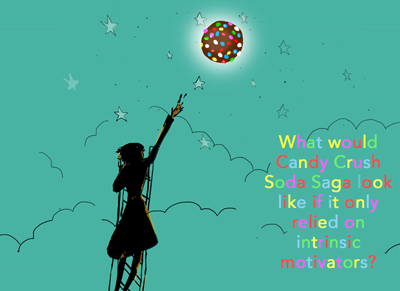
I think in general, when we’re engaging in an activity, it’s easy to identify what engages us and what doesn’t, but are we equally aware of how do those desires form exactly? What types of motivations are there? How can we leverage them? And what are the implications of each of them?
In an attempt to try and apply these concepts into the work I do as a F2P game designer, and with the goal of clarifying them for myself, I observed how it works on a popular game as Candy Crush, and did a thought and design exercise at the end as a bit of a twist.
But first, a bit of theory.
Intrinsic vs extrinsic motivation
According to this paper from the University of Rochester, intrinsic motivation is defined as:
“the doing of an activity for its inherent satisfactions rather than for some separable consequence”
In order for a motivation to be considered intrinsic, it needs to offer the qualities of competence (self-efficacy), autonomy (the perception that there’s agency), and relatedness (g a sense of belongingness and connectedness to the persons, group, or culture disseminating a goal).
According to the same paper, “Intrinsic motivation can be long-lasting, self-sustaining, and satisfying.”
Some examples of factors that typically involve intrinsic motivation are: curiosity, challenge, or fantasy.
On the other side, extrinsic motivations are generated from factors outside the ones offered by engaging in the task itself. Extrinsic motivators are usually used “to attain outcomes that a person wouldn’t get from intrinsic motivation.” These external factors can also be present in forms of punishment.
Candy Crush Soda Saga and player’s motivations
Keeping this into mind, I tried to reconstruct what the player motivational journey in a session in Candy Crush Soda Saga would be, trying to describe with certain objectivity how I feel each type of motivation would intervene at each point.
1. Game start
Extrinsic motivator: The first thing I encounter in my session is a Daily Bonus popup, where I’m awarded with an item reward for login into the game.
The UI also clearly points out that I’ll get another reward the next day if I show up again. Offering an item as a reward in exchange of an action is a clear example of extrinsic motivator.
Extrinsic motivator: What continues next is a few popups with some information about my participation in events, like “Mr. Toffee’s Fair”.
Unfortunately I didn’t succeed this time, and because of that, the game delivers a punishing message: a reminder that I didn’t achieve the expectations.
Extrinsic motivator: The next popup shows me yet another event where I didn’t complete the goals successfully. The bat ran away with the key, that’s my punishment.
Extrinsic motivator: “The Noble Path” (the game’s seasonal pass) is presenting me with a list of booster rewards I can get if I complete the goal. In this case there’s yet another extrinsic motivator present, which is a time limit. Timers and time limits are extrinsic motivators because they drive action by themselves. If you prioritize a task or take some action after seeing a timer, you’re changing your behaviour because of this external factor
If I get into the details of the event, the goal-setting and the way the rewards are presented, all make emphasis on the extrinsic motivators. Limiting factors like time pressure are highlighted. Also, I’m rewarded with a first free reward, consisting in one of those booster rewards.
Extrinsic motivator: Next up, a popup about the “Move Rush Challenge”. In the line of the previous ones, the message here emphasizes the rewards I would win, but also the time limit. The popup literally states: “don’t miss”, or you’ll loose the opportunity.
Intrinsic motivator: The last popup of this popup chain is the “send lives” popup, a message that, from my point of view, doesn’t poke any extrinsic motivation in particular. Gifting things to friends or players could be regarded as a mean to a final goal (get another reward in exchange for example), but that’s not what the mechanic suggests in this case. It rather depends on the use the player makes of it.
Features that give players the opportunity to engage socially are generally good placements for intrinsic motivation, unless they feed into competitive systems competitions or reward with goals.
As a recap of my start of the session, I’ve been prompted with a series of reminders and messages that almost exclusively addressed and nurtured extrinsic motivators. Most of the times, the communication didn’t even cover or focused other points that for me, as a player, are important, like what the mechanics or the stories behind each event are.
2. Main screen
Let’s take a look at the main screen of the game and at which, if any, are the motivations suggested by the visual communication, or even by the arrangement of the elements itself.
Intrinsic motivator. The first things that catches my eye here is the set of visual elements and animations that populate the background of the screen. The scene feels alive, and since it’s winter themed, and it’s winter where I am living right now, I feel instantly curious and connected to the messages. When I tap on the little character to know more about it, I get this written flavourful messages that cheers me up.
I am more curious and would like to discover more about these characters and world (curiosity is a typical intrinsic motivator), but after a short exploration of the screen, I discover that there’s nothing else to it.
Extrinsic motivators. At the left of the screen I find some entry points for events, including some of the ones I mentioned before, and all of them include timers or notifications that are dragging my attention to it. I feel like I would tap on them and see what is going on by myself, just because I’m playing this game and am willing to engage.
But the timers and badge notifications are pulling my attention there, increasing the motivators to make sure that I interact via implied negative reinforcement like “this will be gone soon”, or “you need to check this out”:
Extrinsic motivators. The first feature I’m inspecting from those entry points has a UI structure and emphasis of visual elements that are very clearly pushing me towards a final goal: “remove the crown from the current winner”. This feature is trying to prompt players that are motivated by competition with extrinsic goals, like prestige.
Other important elements, like what is actually interesting about the level design of these levels, or what role I play in this monster world, are not even mentioned.
Intrinsic/extrinsic motivators. Next we have Teams, which is the hub for the social features in the game. At the top I have a section where I can see the progress I’ve made in baking the cake. To my surprise, for once, the rewards are not highlighted, but only the progress. A measure of my progress towards certain goal by itself sounds like a nice visualization of an intrinsic motivation (sense of mastery). However, when I get into the details, I am impacted with some more negative messaging about the time limit I didn’t meet and the goals I didn’t achieve.
Intrinsic/extrinsic motivators: However, it seems like there are more events and more chances following up. Now I’m checking out the “soda squad”, where I can collect points with other team members to win prices. In the social hub I can even chat with my team members to organize about how I can achieve that. Social interaction and organization in collaborative mechanics is a strong ground for allowing intrinsic motivations to develop. And to some extend, it feels like that can play an important role in this feature, even though, there’s still a final booster reward offered to the player.
As I go out to the main screen again, I encounter more features based on the same formula that’s repeatedly used in the game for leveraging motivations (restrictions/pressure conditions – possible reward – negative result), although they do it with different formulas. This event, for example, doesn’t emphasize on punitive messages.
Extrinsic motivators: At the right of the game’s main screen there’s a leaderboard (although it’s not clear what event or feature it’s making reference to). Again, a competitive mechanic where the motivation is driven by getting a position in relation to the other, relies on extrinsic motivators.
Intrinsic and extrinsic motivators. Then at the bottom of the screen we have the previously known as “saga map”, where I can see my progress and my achievements in the main level progression of the game. I always thought that this sort of UI visualization, that’s gives the player a sense of progression, highlighting the achievements the player has made, is a nice way to encourage intrinsic motivation.
It could be said though that the visual language that categorizes the achievements from each level could be perceived as a sort of prize, as it suggests the flavour of a physical medal.
Also, the view of the future levels that the player hasn’t tackled yet does focus on highlighting extrinsic motivations. Check detail here:
As a summary of this section, we’ve seen that in the main screen of the game (including HUD elements and features that are accessed through them) there’s a disproportionated presence of attention towards extrinsic motivators. The potential for exposing intrinsic motivators doesn’t seem to be prioritized by the designers. Why not making more emphasis, for example, in the fun players can get out of the level design in each event? Or in how juicy social interaction can be? Later on I’ll explore some ideas that could be integrated in that direction.
3. Core gameplay
After being bombarded with all the rewards I will miss and all the status I will not achieve if I don’t perform well enough, when I start my gameplay session I feel like the expectations set upon me leave little attention to the gameplay and enjoyment of the pastime itself. But anyways! Let’s see how it goes!
I hit play and I come across this screen where I see my goal of the level, the boosters I own, the leaderscore, and some meta progression (based on an event which information wasn’t showed to me, and that I can not prompt in this screen). Some extra time pressure is shown at a granular level in the time-limi on the boosters.
Intrinsic motivators. Hit play again, and the fun character explains a gameplay mechanic. I think this has been literally the first time so far where I’ve been prompted with a screen that doesn’t include any of the recurrent elements all the other flows have been looping me into so far (restrictions/pressure conditions – possible reward – negative result).
I like puzzle games, and this screen is showing me a mechanic that sounds like fun, that I can integrate in my puzzle-solving routine, and strategize with. This is good!
Extrinsic motivation. More extrinsic motivation sneaking into my gameplay routine, and promising me more rewards:
Extrinsic motivation. if we focus on the interactions that are part of solving the puzzle, whenever I match some candy and get a score assigned to the move, I’m getting extrinsic valuation and rewards. And it scales proportionally to the impact of the move, which is partially defined by my skill, but also by how lucky I am.
What about the Candy Crush characteristic barks that manifest with floating animations and voice acting whenever I make a remarkable move?
Whenever I’m getting someone else’s recognition or acceptance, that comes from extrinsic motivation sources.
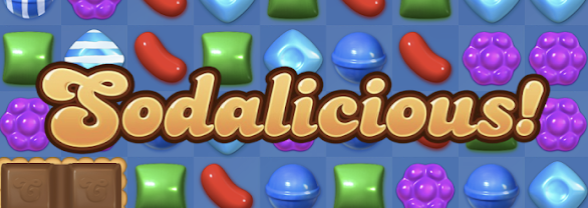
Intrinsic motivator. I would also like to mention a factor that’s not as easy to see as a popup, but that is definitely there, and that defines the experience hugely. The level design. A good and challenging level design that makes a gameplay varied and gives the player space to strategize is a source of intrinsic motivation. It makes me feel active, challenged and engaged. If we remember the terms I defined at the beginning of the article, the components of competence and autonomy that are needed when we’re talking about intrinsic motivation are both present here.
Extrinsic motivator. At the end of a gameplay, I get a series of popups and messages that indicate progress and success. The rewards (extrinsic motivators) at play are almost invariably present in all the placements:
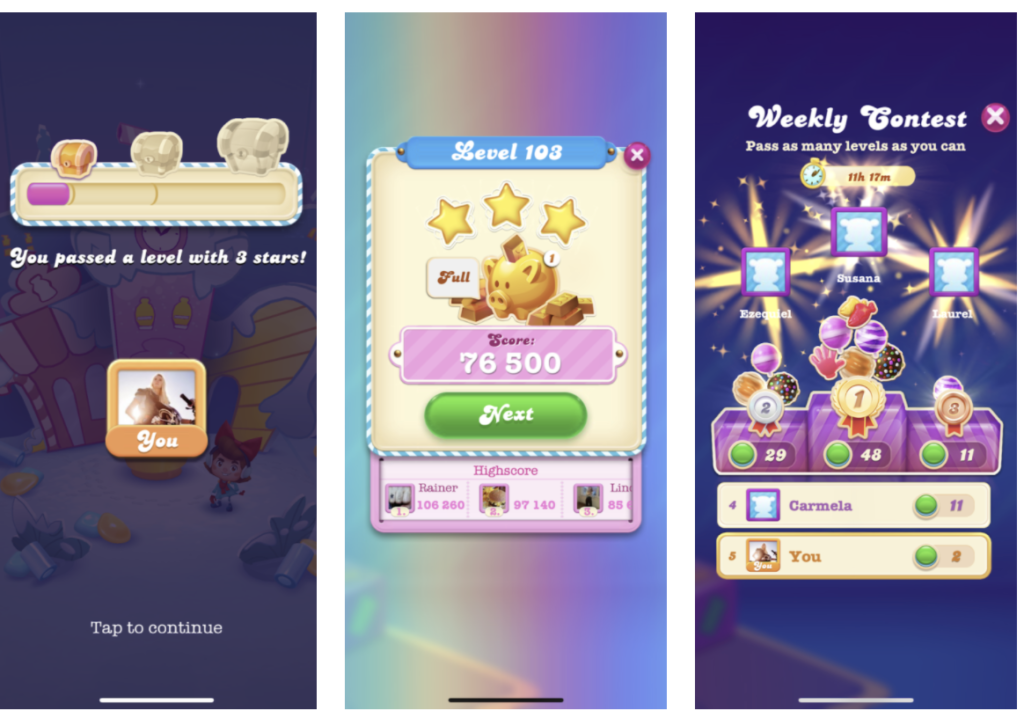
Very little space or emphasis that lets me flavour what I liked about playing the game itself.
Going back to the main screen, I get reminded at random of some of the events where I’m not meeting the expectations, and where I’m not getting a reward:
As a summary of the motivations encouraged or exposed in gameplay in the game, I would say that the level design is the sort of content that players would enjoy engaging with for the sake of it, but it’s however tightly enveloped into messages that constantly drive attention and motivation towards extrinsic elements.
A fully intrinsic motivation driven Candy Crush Soda Saga
And here’s my thought/design experiment where I imagine how that motivational journey and player experience flow would be if there were only intrinsic motivations in place.
1. Game start
Instead of starting the game reminding me how much I failed (in some of those cases the truth is that I didn’t even try) at the various events, why don’t we try to change the flavour a bit, and make the player feel like she will like and enjoy what the game has to offer today? What about and idea like this?
Here we’re including all the ingredients needed for letting intrinsic motivation develop: competence (the player chooses the front she’s better at), autonomy (she gets to make the decision), and relatedness (what if we let the player communicate with her club members to chat about what each event is about and what it feels like? Or what if we saw a counter with information about how many and which of our friends are choosing which type of event?)
2. Main screen
On the topic of adding time pressure to events… time pressure in many cases is framed as an extrinsic motivator, as it pushes me to interact with the events in fear that it will be too late and I will miss out the rewards. However, depending on how it’s integrated, I think it can also be a fun limitation that can encourage players to strategize and get challenged by the content.
In this case, then, what if these events didn’t include any economic or item reward, and also, what if we let the player manage the time pressure? (Turn them on and off, try as many times as they could, etc.)
So now that you’ve taken part in establishing some goals for the session, and that you actually setted up those goals yourself, it’s time for starting your session, and exploring what else you can do in the game.
With a couple tweaks we downgrade a bit more the presence of extrinsic motivations in favour of intrinsic ones: remove timers, turn the ranking from the right into a measure of my own progression into gameplay skill level (relying on some levelling system).
What other features would I want to access via HUD menu as a player? What about a “Puzzle Academy” where I am taught or reminded of mechanics, tricks and so on that I can put into practice on my daily gameplay routines? Maybe the player can choose one mechanic or tactic she wants to practice, and the game shows her the score based on how many times she’s achieved it.
We can also leverage the social interaction, but instead of putting it as a competition where I lose the opportunity to get rewards if the others are better than me, I can choose if I want to check the stats of other players and compare myself to them or not.
In terms of the social hub, I think having a bunch of people that can interact with each other gives space to the player to engage in an activity with great potential for intrinsic motivation such as building connections.
Even though this is not a social network, but a game, I think there are ways to motivate the focus of the interaction to be the game mechanics. In this type of event more than anywhere else in the game, I would imagine that players could get enough value out of the interaction itself without the need of adding rewards on top of it.
So here we could for example have an event where players need to coordinate to solve as many levels as possible in a certain time frame, and where people are free to discuss what levels are better to play and what type of boosters and tricks they can use to make it faster.
Someone could argue that maybe this will not be enough for motivating and engaging players in the long run, but then after all, social is not an ecosystem intrinsic to games, but rather one of the motivations that engage some players and that presents a convenient opportunity for design.
3. Core gameplay
Now to the match-3! One of the areas that in my opinion has more potential for leveraging intrinsic motivations. Because after all, when players are browsing games in the App Store, they still don’t know the value of boosters and economic rewards. It’s rather the gameplay that catches their attention right? Let’s look at some opportunities there.
An intrinsic motivation that a puzzle gameplay can leverage is mastery. What if the game showed players some special moves or strategies they can use every now and then (maybe connected to the “Puzzle Academy” idea explained earlier), allowing her to become a better player gameplay after gameplay?
After doing some research I’ve found lots of community-created content in this direction, where players comment and even have names for specific moves and tactics. Why not leveraging that in-game?
Also, as we said, having a score system that gives you points for your interactions steals the attention from the intrinsic value of making a better move in itself. What would happen if we got rid of the score in Candy Crush Soda Saga gameplay? It sounds like a crazy idea, but would this make a worse gameplay experience?
In our hypothetical design, the success criteria for winning a level could just be solving the puzzle (meeting the goals) with the limitation being the number of moves. Would the game still be fun?
Finally, what about the flow of screens that follows the end of gameplay? I think showing the progress the player has made in the live events with this gameplay round is a good idea, but what if we added an extra step where we show some stats of the round to nurture the player’s sense of achievement? When I’ve been playing the game I’ve always missed some sort of followup on that. What about something like this?
Even though one could argue that there’s a sort of score system exposed here too, instead of relying on an arbitrary assignment of numeric values designers feel convenient for their balancing purposes, we’re just reflecting the interactions of the player in a measure that’s easy for them to keep track of.
So that’s it on the gameplay side and regarding my ideas for leveraging intrinsic motivation in the different areas in the game. What do you think about it? Would a game like this still be fun and make it to the top charts? Is it a too naive approach? Did this thought experiment challenge any of your assumptions about what a casual match-3 game should or can be?
Why leveraging intrinsic motivations?
After I did this design exercise, the first question that popped up in my mind was, “can we assume that it’s always better to leverage intrinsic motivations in a game?” And why?
Benefits for the player (therefore, the “person”)
The cognitive science studies I’ve checked before writing this article all highlight that intrinsic motivations nurtures qualities like perseverance and drive engagement and personal growth. For example, extracted from these works from Deci and Ryan (1985), and Ryan and Deci (2012).
“At the level of personality functioning, intrinsic motivation provides the impetus for individuals to learn about particular subject areas and to differentiate their interests, fostering the development of personal identities that confer a sense of authenticity, meaning, and purpose.”
These are dynamics that I would like to nurture in myself, as I think it helps my personal growth. Then why wouldn’t I want it for the player (hope this note does feel superfluous, but the “player” is a “person” like me, and like my friends and family).
Benefits for the developer
But what about the developer? Even if some might think that, after all, a game company isn’t obliged to any social responsibility (which I disagree with) or to provide players with content that favors their cognitive well-being… Why should they care about leveraging intrinsic motivations better?
Designing features for leveraging motivations that rely on external elements (boosters, items, or economic value for example) locks us. Game economies can get inflated, and virtual items are subject to fragile trends and motivational structures that will lose their appeal over time. If we build the engagement only on extrinsic rewards, once these are gone, the thing that was motivating the player will be gone too, so there will be no appetite to stay engaged anymore. On the other side, if we favour intrinsic motivations with our designs, the player herself will become an endless source of motivation so that we can focus on releasing good quality content.
You probably have a lot of good content and good mechanics in your game anyways. Why not using the truth potential of this to your advantage?
Last words
It’s not my intention with this article to oversimplify things and say that intrinsic motivation is good and extrinsic is bad. There’s some research that shows how extrinsic motivators can be useful and play a good role in some situations, for example, when there is a task that needs to be done short term. In this study from Woolley, K., & Fishbach, A. (2018), we can see that “immediate rewards increase intrinsic motivation by creating a perceptual fusion between the activity and its goal”.
However, the point I want to make with all this is that we overuse extrinsic motivators in free to play games because of the wrong reasons, that by doing that we’re giving up on great opportunity, and also, that we’re not always fully aware of what that does to our player motivation and player experience.
I think developers in general become risk averse and rely on metrics and results from granular AB tests to define flows and contents of popups partially because of the volatility of the markets. I think when we frame features as packages of timers and collections of rewards, it’s easier and safer to turn something abstract as the game experience and player interaction into something measurable and easy to handle.
But maybe we’re losing sigh of the big picture. Wouldn’t developers also prefer that players find in their games a fun and motivating experience that grows long term bonds with the games? Because at the end of the day, engagement is the first metric a developer cares about, as it correlates with monetization.
Then why don’t we plant the seeds for that to happen?
Sources
Here are some of the sources consulted and referenced in this article:
Woolley, K., & Fishbach, A. (2018), It’s about time: Earlier rewards increase intrinsic motivation.
Edward L Deci (1981), When Trying to Win: Competition and Intrinsic Motivation
Woolley, K., & Fishbach, A. (2018), It’s about time: Earlier rewards increase intrinsic motivation.
Deci and Ryan (1985), Intrinsic Motivation and Self-determination in Human Behavior
Ryan and Deci (2012), Multiple identities within a single self: a self-determination theory perspective on internalization within contexts and cultures
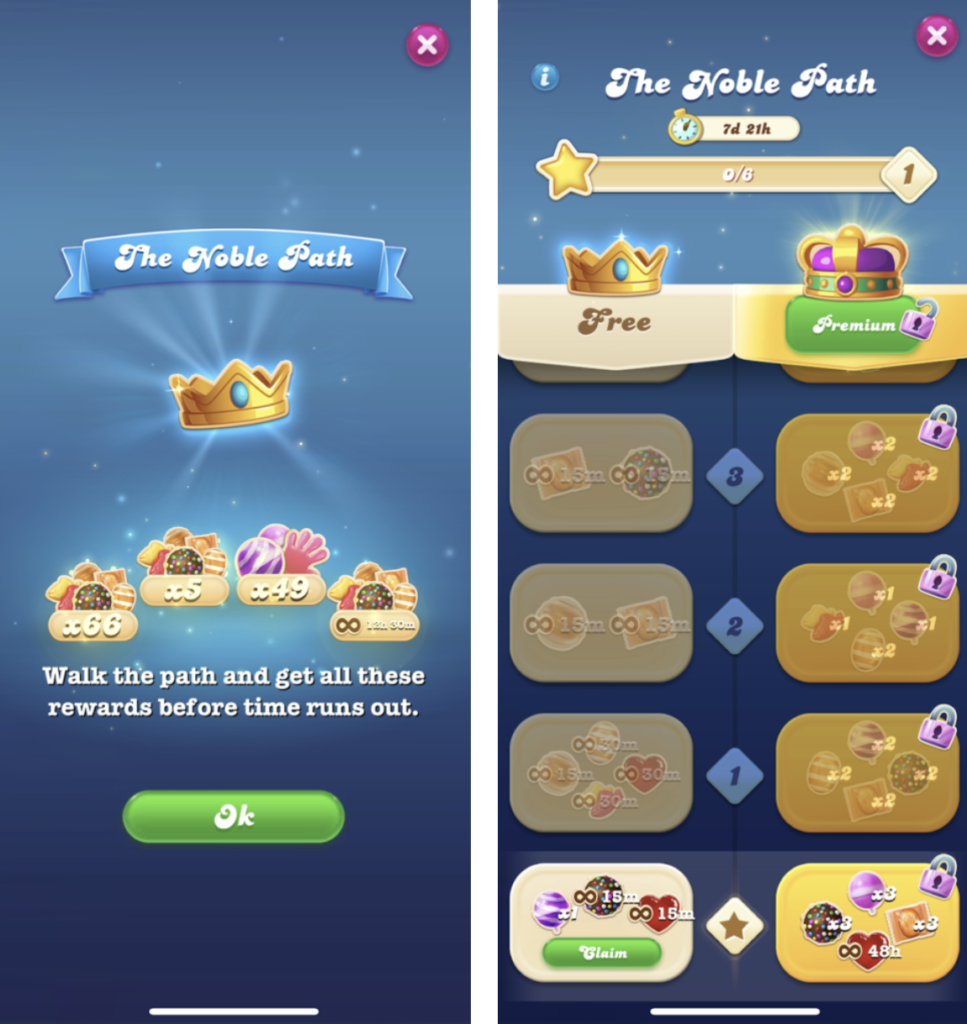
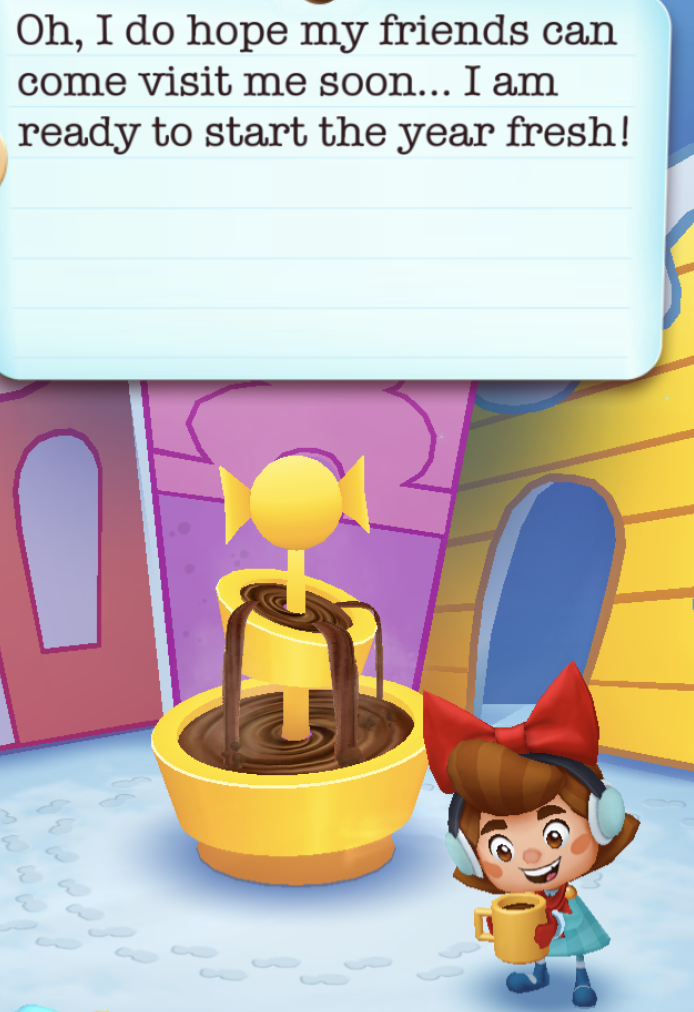
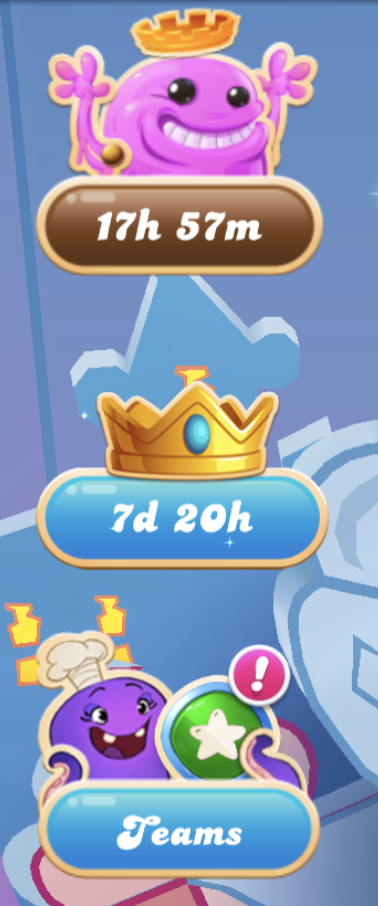
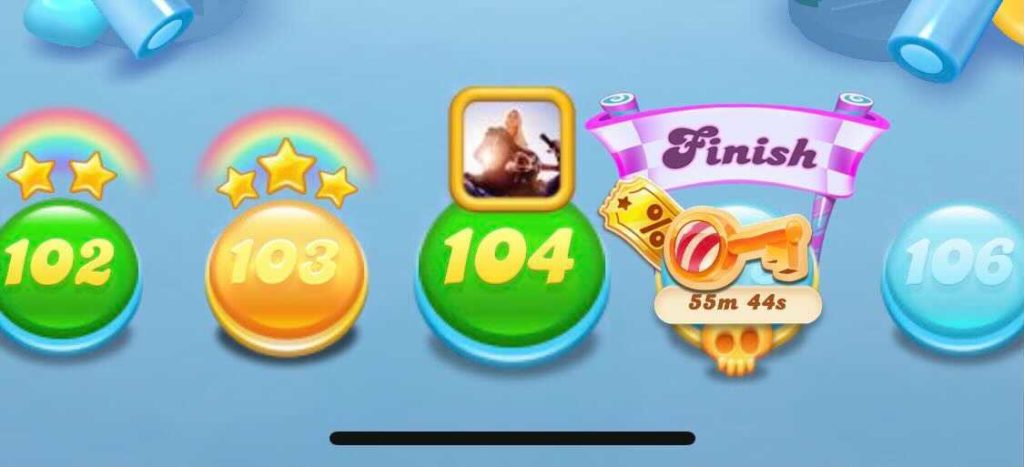
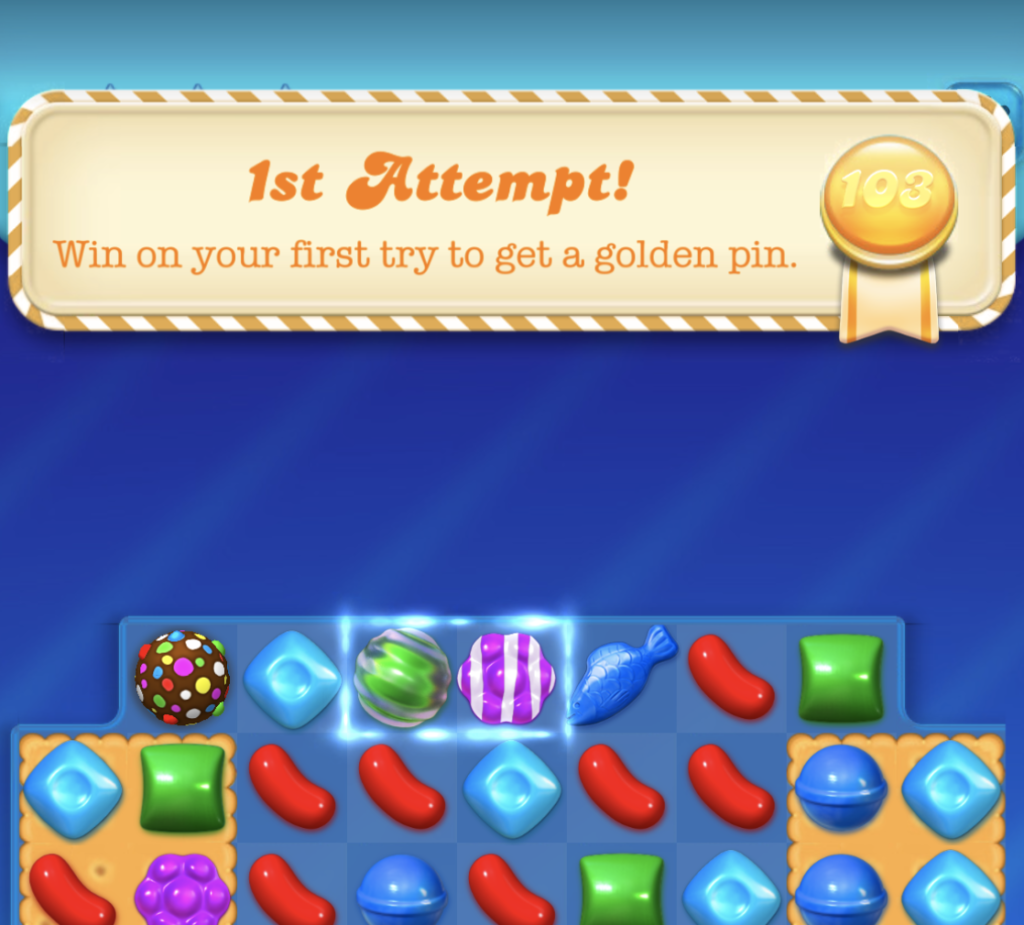
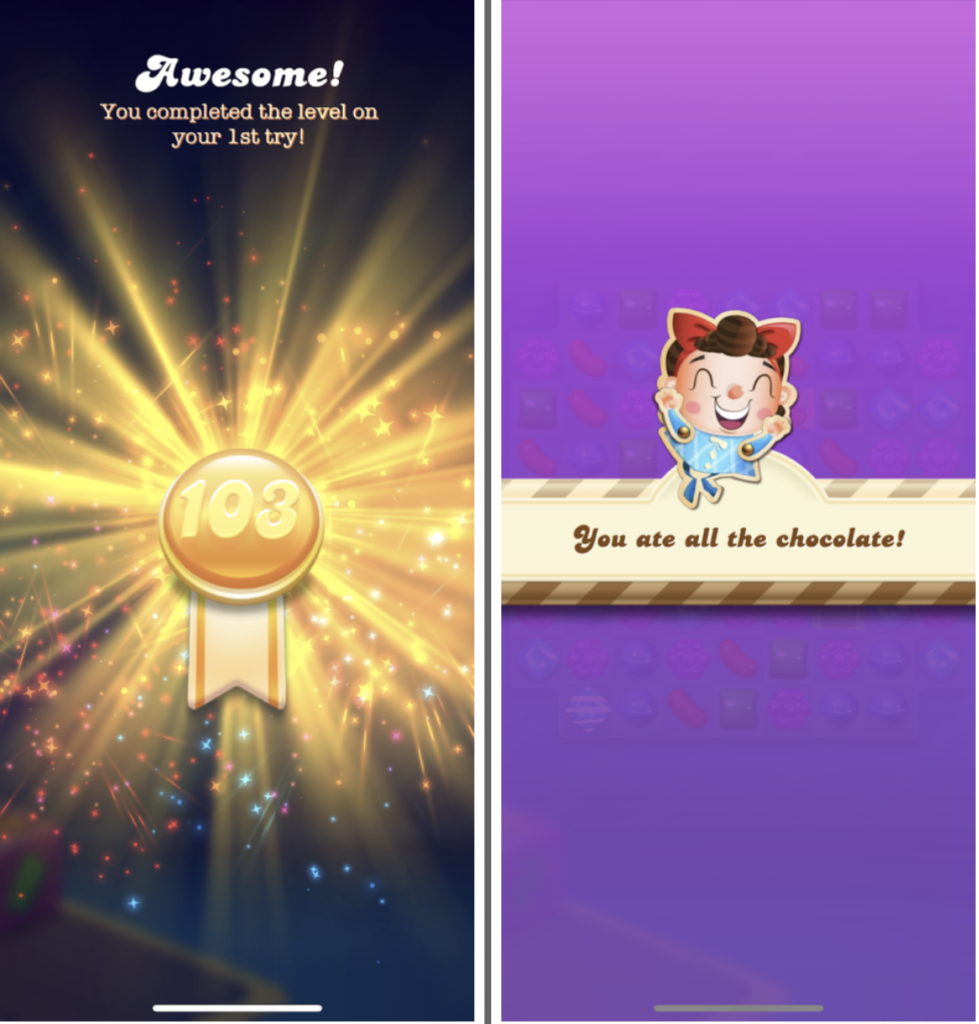
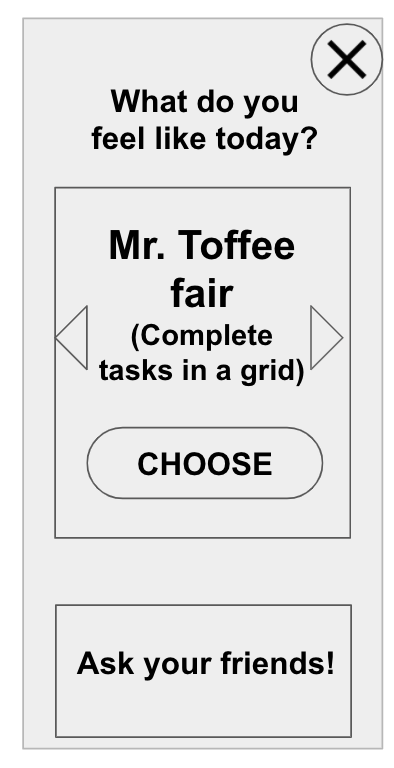

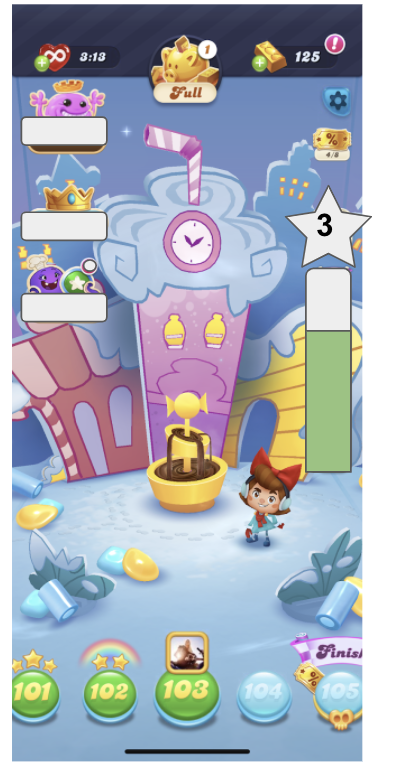
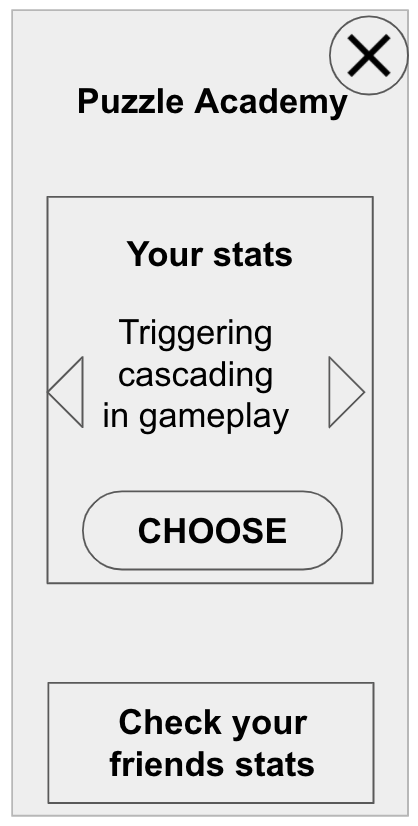
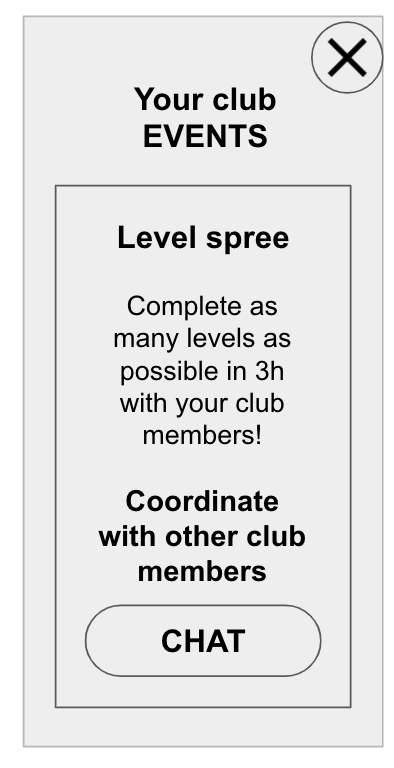
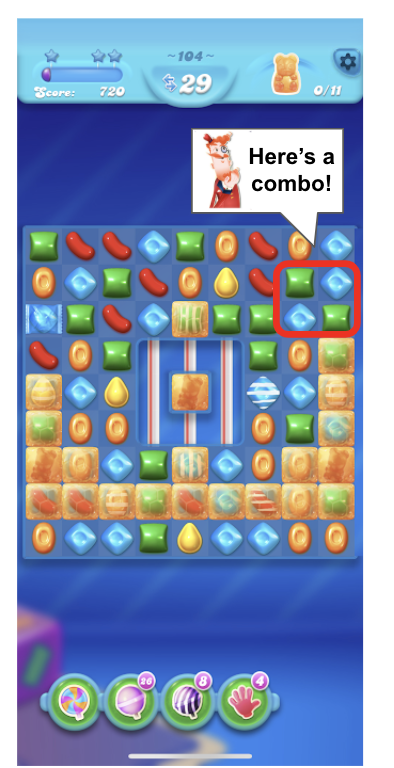
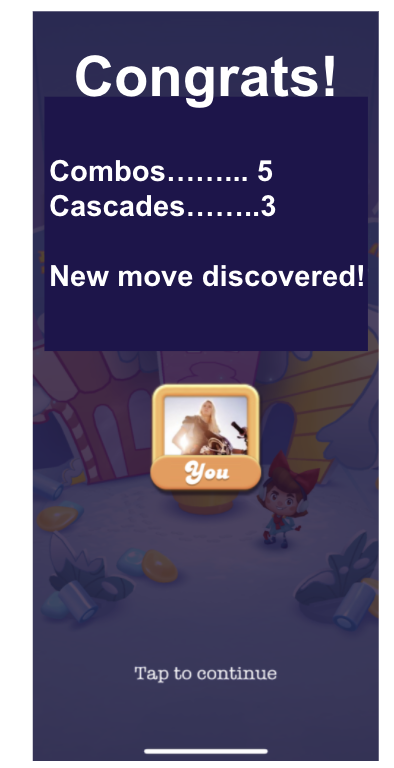
Leave a Reply